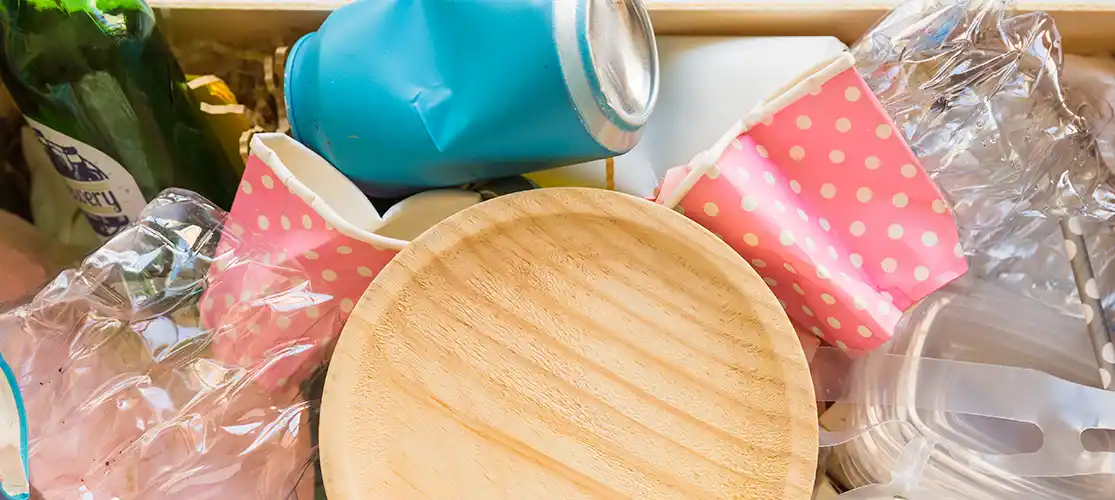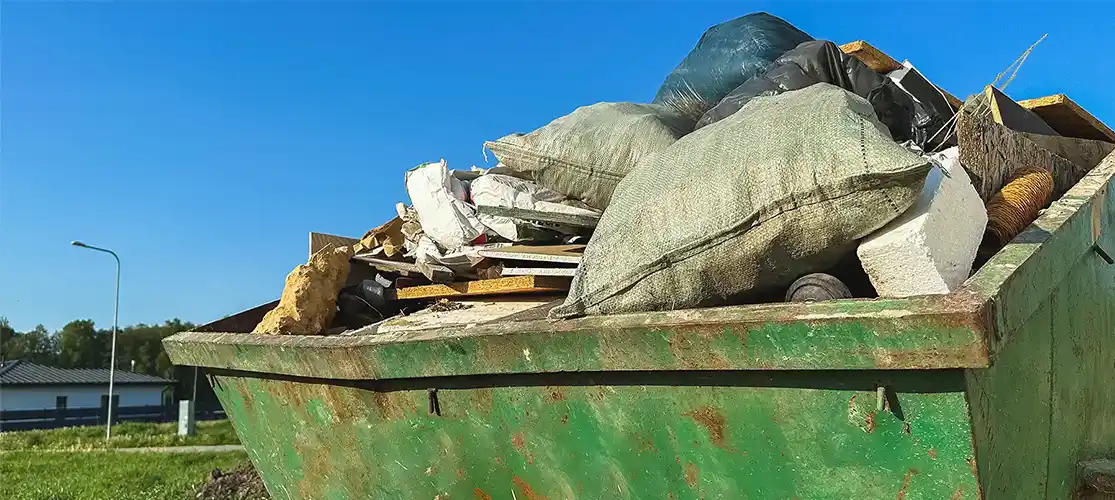Skips. They’re large, yellow and you fill them full of junk, what more is there to know? Quite a lot more as it turns out. In this article we will look at the history of the skip, the different types of skips, what you can (and can’t) put in them, and when you need a licence. Everything you need to know about skips! Let’s start with the basics, exactly what is a skip?
What is a skip?
A skip, also known as a dumpster in the USA, is a large open-topped waste container designed for loading onto a dedicated lorry. Some skips have a characteristic trapezoidal shape, with a smaller flat base sloping out at both ends. Drop-door skips allow one of the ends to be lowered to the ground, for easier access. Skips are constructed from hard wearing steel panels (to withstand the constant use they are exposed to) and are often yellow (to make them easier to see). They come in a large variety of sizes too, but more on that later.
History of the skip
The word skip is believed to have its origin in the old English word ‘sceppe’, meaning basket. However, it is in the industrial revolution that Lancastrian cotton mill workers used skeps, huge, wheeled baskets, to place their woven cotton in. Skeps were also to be found in coal mines during the same period. These were hand-held buckets with arched handles, used for measuring coal. As the coal mining industry grew, larger wood and metal containers, running on rails, were used to move the coal. It is these larger skeps that may have given rise to both the concept, and the name of the modern skip.
The USA, however, has a strong claim for developing the modern skip as we know it today. George Dempster was a businessman and inventor, who with his brothers Thomas and John, formed the Dempster Brothers Construction Company. In 1935, they invented what became known as the Dempster Dumpster, a piece of equipment that could lift and transport portable containers to and from construction sites. A hydraulic hoist, mounted on the back of a truck, could hook-up, lift, carry, and dump the portable container, or dumpster. Or skip, if you are based in the UK!
Who invented the skip?
It was the fictional North Norfolk radio DJ, Alan Partridge, who ‘famously’ asked the question “who invented the skip” during his early morning radio slot, (episode 3 of “I’m Alan Partridge” if you want to check!) The exact inventor depends on how you define a skip, but it was probably the Dempster Brothers and their Dumpster, which come closest to being awarded the accolade.
What can you put in a skip?
You may think that you can legally put anything in a skip, but that is not the case. Some materials are either too dangerous to be skipped, or have strict recycling requirements. Whilst building rubble, broken furniture, uncontaminated soil, cardboard, plastic, and metal are commonly found in skips, things which must not be put in include:
- Asbestos
- Lithium batteries
- Clinical or medical waste, including syringes
- Fluorescent tubes
- Gas canisters and gas bottles
- Hazardous & toxic materials
- Liquids
- Oil, petrol, diesel
- Paint, including cans of liquid paint
- Tyres
- TVs & computer screens
Care should be taken when leaving a skip in a public place, to ensure that such items are not added to the skip without the hirer’s knowledge!
How big is a skip?
Skips come in many sizes. The most commonly seen are either 6 or 8-yard skips, referring to their cubic capacity. These will typically hold between 60 and 80 bin-bags worth of waste. Four-yard skips, suitable for small garden projects or DIY jobs are typically the smallest size of skip seen, with builder’s bags being deployed for more modest loads.
At the top end, roll-on, roll-off skips of between 20- and 50-yard capacity are ideal for large amounts of mixed waste, metal, or bulky materials. These may be found in both domestic and commercial environments.
What is a skip licence?
A skip licence is required if you wish to locate a skip on a public right of way, such as a road. The licence, or permit, will typically last one or two weeks, and is usually applied for by the skip hire company, working with the hirer to establish duration and location. Not having a skip permit is unlawful, you can be liable to a fine, and the skip could be removed at any time. It normally takes up to a week for a council to process a skip permit application.
How do I hire a skip?
Hiring a skip is easy. Once you have worked out the likely capacity of skip you require, the dates when you want it, and the location where you wish it to be delivered to, simply get in touch with a good skip hire company. They will do the rest!
We have a range of skips you can hire as well as waste disposal, muck away, scrap collection (including cars), purchasing scrap metal, and car spares.
For more information, please call Trowbridge on 01225 753333 or Warminster 01985 213348, or get in touch via our website.


